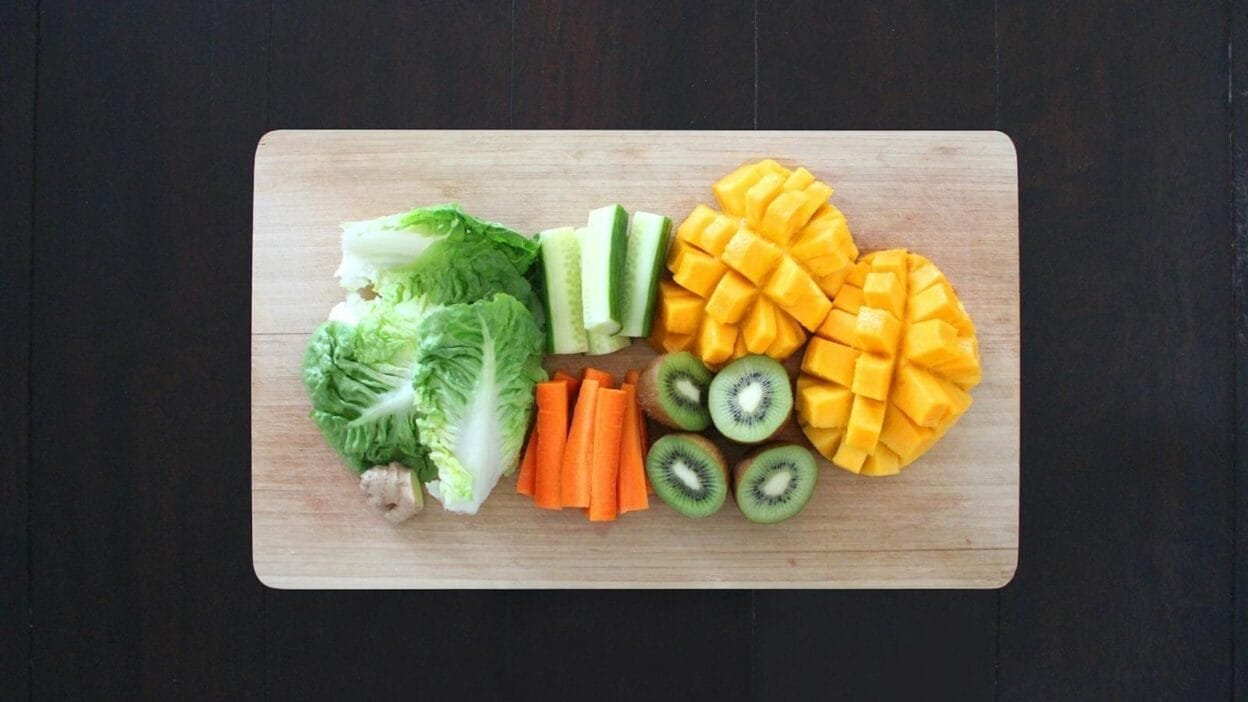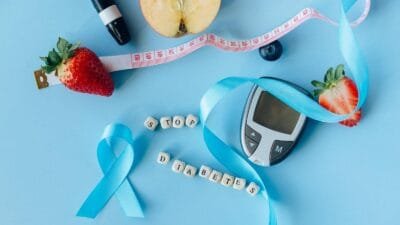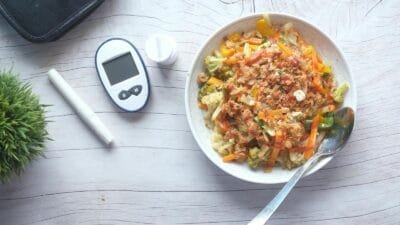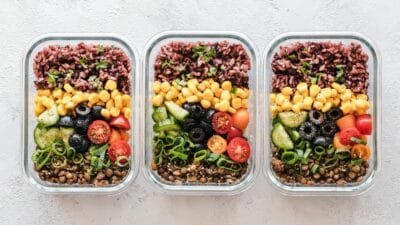In a world grappling with escalating rates of diabetes and obesity, the quest for effective and sustainable health solutions has never been more critical. For individuals navigating the complexities of diabetes, weight management is not merely an aesthetic pursuit; it’s a cornerstone of disease management and overall well-being. Excess weight can exacerbate insulin resistance, complicate blood sugar control, and heighten the risk of associated complications. Embracing a structured dietary approach offers a powerful avenue to regain control, improve health markers, and enhance quality of life.
The significance of a tailored diet plan for individuals with diabetes aiming for weight loss cannot be overstated. Unlike generic weight loss strategies, a diabetes-focused diet must meticulously balance calorie reduction with the imperative of blood glucose regulation. It’s about far more than simply cutting calories; it’s about strategically selecting nutrient-dense foods that stabilize blood sugar levels, promote satiety, and fuel the body effectively. A well-designed plan empowers individuals to make informed food choices, fostering long-term healthy habits and paving the way for sustainable weight management and improved diabetic control.
This comprehensive article unveils a 28-Day Diabetes Diet Plan for Weight Loss, meticulously crafted to empower you on your journey towards better health. This isn’t a restrictive fad diet, but a balanced, evidence-based approach that prioritizes both effective weight reduction and optimal blood sugar management. Within these pages, you will discover the fundamental principles underpinning this plan, explore delectable food options that nourish your body, gain access to a sample meal plan to guide your daily choices, and equip yourself with practical strategies for sustained success. Embark on this 28-day journey and unlock the transformative potential of nutrition in managing diabetes and achieving your weight loss aspirations.
Understanding Diabetes and Weight Loss: A Synergistic Approach

For individuals living with diabetes, the relationship between diet, weight, and blood sugar levels is intricately intertwined. Managing diabetes effectively often necessitates a dual focus: achieving healthy weight loss and maintaining stable glucose levels. Understanding this synergy is the first step towards harnessing the power of a 28-Day Diabetes Diet Plan for Weight Loss.
The Interplay Between Diabetes and Weight
Diabetes, particularly type 2, is frequently associated with overweight and obesity. Excess body weight, especially abdominal fat, contributes to insulin resistance. Insulin, a hormone produced by the pancreas, is crucial for allowing glucose to enter cells for energy. In insulin resistance, cells become less responsive to insulin, leading to elevated blood sugar levels, a hallmark of diabetes. This creates a vicious cycle: high blood sugar can contribute to further weight gain, and increased weight exacerbates insulin resistance, making diabetes management more challenging.
Weight loss, even modest amounts (5-10% of body weight), can significantly improve insulin sensitivity. As body fat decreases, cells become more responsive to insulin, allowing glucose to be utilized more efficiently, thereby lowering blood sugar levels. This improvement in insulin sensitivity not only helps manage diabetes more effectively but also reduces the risk of long-term complications associated with uncontrolled blood sugar, such as nerve damage (neuropathy), kidney disease (nephropathy), and cardiovascular disease. Therefore, for individuals with diabetes, achieving and maintaining a healthy weight is not just about appearance; it’s a fundamental aspect of disease management and long-term health preservation.
Why a Structured Diet Plan is Essential for Diabetics Aiming for Weight Loss
While general weight loss advice often emphasizes calorie restriction and increased physical activity, individuals with diabetes require a more nuanced and structured approach. A generic weight loss diet may inadvertently lead to blood sugar fluctuations, nutritional deficiencies, or unsustainable eating patterns. A 28-Day Diabetes Diet Plan for Weight Loss offers a tailored framework that addresses these specific needs.
Firstly, a structured plan ensures consistent blood sugar management. It emphasizes foods with a lower glycemic index (GI) and glycemic load (GL), which are digested and absorbed more slowly, leading to a gradual rise in blood sugar rather than sharp spikes. This is crucial for preventing hyperglycemia (high blood sugar) and hypoglycemia (low blood sugar), both of which can be detrimental to health and well-being.
Secondly, a well-designed diabetes diet plan prioritizes nutrient density. It focuses on whole, unprocessed foods rich in vitamins, minerals, fiber, and antioxidants, ensuring that nutritional needs are met even while reducing calorie intake. This is vital to prevent nutrient deficiencies and support overall health, especially when managing a chronic condition like diabetes.
Thirdly, a structured plan promotes sustainable lifestyle changes. The 28-Day Diabetes Diet Plan for Weight Loss is not intended as a quick fix, but rather as a foundation for adopting long-term healthy eating habits. By providing clear guidelines, meal ideas, and practical strategies, it empowers individuals to make informed food choices consistently, fostering lasting weight management and improved diabetic control. It moves away from restrictive dieting towards a balanced and enjoyable way of eating that can be sustained over time.
Core Principles Guiding a Diabetes Diet for Effective Weight Loss
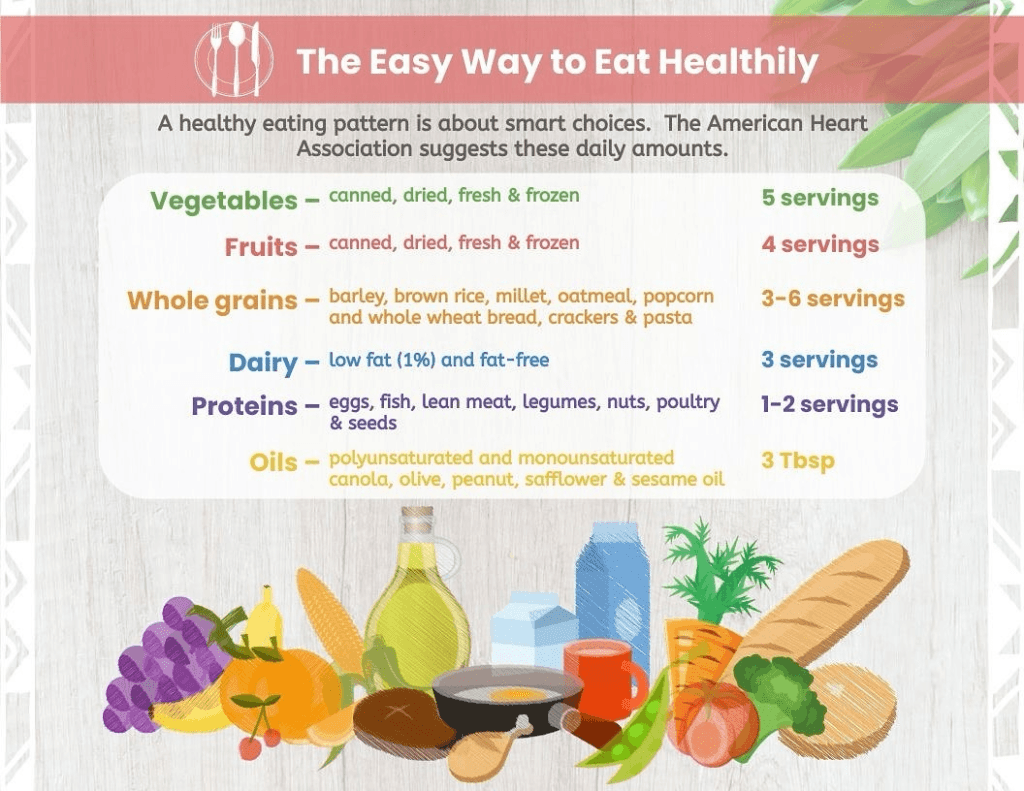
Several key principles underpin an effective 28-Day Diabetes Diet Plan for Weight Loss. These principles work in harmony to facilitate both weight reduction and optimal blood sugar control.
- Prioritize Non-Starchy Vegetables: Non-starchy vegetables are nutritional powerhouses, packed with fiber, vitamins, and minerals, yet low in calories and carbohydrates. They are crucial for satiety, aiding in weight management, and have a minimal impact on blood sugar levels. Examples include leafy greens, broccoli, cauliflower, peppers, and cucumbers. They should form the foundation of most meals in the 28-Day Diabetes Diet Plan for Weight Loss.
- Choose Lean Proteins: Lean protein sources are essential for building and maintaining muscle mass, promoting satiety, and supporting metabolic function. They also have a minimal impact on blood sugar. Excellent choices include fish, poultry (skinless), beans, lentils, tofu, and lean cuts of meat. Incorporating lean protein at each meal is vital for the 28-Day Diabetes Diet Plan for Weight Loss to support weight management and blood sugar control.
- Select Whole Grains in Moderation: Whole grains, unlike refined grains, retain their bran and germ, providing fiber, vitamins, and minerals. While they contain carbohydrates, their fiber content slows down digestion and glucose absorption, leading to a more gradual rise in blood sugar compared to refined grains. Choose whole grains like quinoa, brown rice, oats, and whole wheat bread in controlled portions within the 28-Day Diabetes Diet Plan for Weight Loss.
- Embrace Healthy Fats: Healthy fats, such as monounsaturated and polyunsaturated fats, are crucial for heart health, brain function, and satiety. They do not significantly raise blood sugar levels and can contribute to feeling full and satisfied. Include sources like avocados, nuts, seeds, olive oil, and fatty fish in moderation in your 28-Day Diabetes Diet Plan for Weight Loss.
- Control Portion Sizes: Even with healthy foods, consuming excessive portions can lead to weight gain and blood sugar spikes. Portion control is a fundamental principle of the 28-Day Diabetes Diet Plan for Weight Loss. Utilize smaller plates, measuring cups, and mindful eating techniques to manage portion sizes effectively.
- Time Your Meals Strategically: Regular meal timing helps regulate blood sugar levels and prevents overeating. Aim for consistent meal and snack times throughout the day, as outlined in the 28-Day Diabetes Diet Plan for Weight Loss. This consistent schedule helps stabilize glucose levels and manage appetite.
- Limit Sugary Drinks and Processed Foods: Sugary drinks and processed foods are typically high in calories, unhealthy fats, and refined carbohydrates, and low in essential nutrients. They can cause rapid blood sugar spikes and contribute to weight gain, directly contradicting the goals of the 28-Day Diabetes Diet Plan for Weight Loss. These should be strictly limited or avoided entirely.
- Hydrate Adequately: Water is essential for overall health and plays a vital role in metabolic processes. Staying well-hydrated can also help with satiety and prevent mistaking thirst for hunger, supporting weight management within the 28-Day Diabetes Diet Plan for Weight Loss. Aim for at least 8 glasses of water per day, adjusting based on activity levels and climate.
Embarking on the 28-Day Diabetes Diet Plan for Weight Loss: A Structured Approach
The 28-Day Diabetes Diet Plan for Weight Loss is structured to provide a clear and manageable roadmap for achieving your health goals. This plan emphasizes balanced meals, strategic snacking, and consistent choices that support both weight reduction and blood sugar control. It’s designed to be adaptable and sustainable, empowering you to make lasting lifestyle changes.
Overview of the 28-Day Structure: Building Healthy Habits Week by Week
This 28-Day Diabetes Diet Plan for Weight Loss is designed as a progressive journey, building upon healthy habits week by week. While the core principles remain consistent throughout the 28 days, the plan encourages you to gradually refine your food choices and become more attuned to your body’s signals.
- Week 1: Foundation and Familiarization: The first week focuses on establishing the foundational principles. It’s about familiarizing yourself with the recommended food groups, portion sizes, and meal timing. The emphasis is on incorporating more non-starchy vegetables and lean proteins into your meals, while consciously reducing sugary drinks and processed foods. Week 1 sets the stage for the rest of the 28-Day Diabetes Diet Plan for Weight Loss.
- Week 2: Refinement and Increased Awareness: Building upon Week 1, Week 2 encourages you to further refine your food choices, focusing on whole grains in moderation and healthy fats. You’ll become more aware of your hunger and fullness cues and practice mindful eating. This week delves deeper into making conscious and healthy choices within the 28-Day Diabetes Diet Plan for Weight Loss.
- Week 3: Diversification and Recipe Exploration: Week 3 is about diversifying your meals and exploring new diabetic-friendly recipes. This week prevents diet fatigue and keeps meals exciting. Experiment with different herbs, spices, and cooking methods to enhance flavor and enjoyment within the framework of the 28-Day Diabetes Diet Plan for Weight Loss.
- Week 4: Consolidation and Long-Term Vision: The final week focuses on consolidating the healthy habits you’ve cultivated over the previous three weeks. It’s about reflecting on your progress, identifying what works best for you, and planning for long-term sustainability beyond the 28 days. Week 4 is crucial for transitioning the 28-Day Diabetes Diet Plan for Weight Loss into a lasting lifestyle change.
Core Components of the Diet: Food Groups, Portion Control, and Meal Timing
The 28-Day Diabetes Diet Plan for Weight Loss is built upon three core components: strategic food group selection, mindful portion control, and consistent meal timing. These components work synergistically to optimize blood sugar management and facilitate weight loss.
- Strategic Food Group Selection: The plan prioritizes nutrient-rich food groups that support both diabetes management and weight loss:
- Non-Starchy Vegetables: Form the cornerstone of the diet. Unlimited portions are encouraged.
- Lean Proteins: Essential at each meal. Choose from fish, poultry, beans, lentils, tofu, and lean meats.
- Whole Grains (Moderate Portions): Select quinoa, brown rice, oats, and whole wheat bread in controlled amounts.
- Healthy Fats (Moderation): Include avocados, nuts, seeds, olive oil, and fatty fish in sensible portions.
- Fruits (Lower Glycemic Fruits): Berries, apples, pears, and citrus fruits are preferred in moderation due to their fiber content and lower glycemic impact.
- Mindful Portion Control: The plan emphasizes mindful portion control to manage calorie intake effectively. Strategies include:
- Using smaller plates and bowls.
- Measuring portions, especially for grains, fruits, and protein sources.
- Paying attention to hunger and fullness cues and stopping when satisfied, not overly full.
- Consistent Meal Timing: The plan promotes consistent meal and snack timing throughout the day. This helps regulate blood sugar levels, prevent overeating, and optimize metabolic function. Aim for:
- Three balanced meals per day (breakfast, lunch, and dinner).
- Optional healthy snacks between meals if needed to manage hunger or prevent hypoglycemia (as advised by your healthcare provider).
Foods to Embrace on Your 28-Day Diabetes Diet Plan for Weight Loss

The 28-Day Diabetes Diet Plan for Weight Loss is not about deprivation; it’s about embracing a wide array of delicious and nutritious foods that support your health goals. Focus on filling your plate with these food groups:
Non-Starchy Vegetables: Your Plate’s Foundation
Non-starchy vegetables are nutritional powerhouses and should form the bulk of your meals in the 28-Day Diabetes Diet Plan for Weight Loss. They are low in calories and carbohydrates, high in fiber, vitamins, and minerals, and contribute significantly to satiety. Enjoy these liberally:
- Leafy Greens: Spinach, kale, lettuce, collard greens, mustard greens, arugula, romaine lettuce, and Swiss chard.
- Cruciferous Vegetables: Broccoli, cauliflower, cabbage, Brussels sprouts, bok choy, and kale.
- Salad Vegetables: Cucumbers, tomatoes, bell peppers (all colors), celery, radishes, and zucchini.
- Other Non-Starchy Options: Green beans, asparagus, onions, mushrooms, eggplant, okra, artichokes, and spaghetti squash.
Lean Proteins: Building Blocks for Health and Satiety
Lean proteins are essential for muscle maintenance, satiety, and metabolic function, and play a crucial role in the 28-Day Diabetes Diet Plan for Weight Loss. Choose these sources regularly:
- Fish and Seafood: Salmon, tuna (canned in water), cod, haddock, shrimp, crab, and scallops. Opt for baked, grilled, or poached preparations.
- Poultry (Skinless): Chicken breast, turkey breast, and ground turkey (93% lean or leaner). Remove skin before cooking to reduce fat.
- Beans and Lentils: Kidney beans, black beans, chickpeas, lentils, and split peas. These are excellent sources of plant-based protein and fiber.
- Tofu and Tempeh: Plant-based protein sources that are versatile and low in fat.
- Lean Cuts of Meat (in moderation): Lean beef (sirloin, tenderloin), pork loin, and lamb leg. Trim visible fat before cooking.
- Eggs and Egg Whites: Excellent source of protein and nutrients. Limit yolk consumption if managing cholesterol levels.
- Low-Fat Dairy (in moderation): Skim milk, plain Greek yogurt, and cottage cheese (1% or nonfat). Choose unsweetened options.
Whole Grains (in Moderation): Fiber and Sustained Energy
Whole grains provide fiber, vitamins, and minerals and offer sustained energy release, making them a valuable component in controlled portions within the 28-Day Diabetes Diet Plan for Weight Loss. Select these whole grain options carefully:
- Quinoa: A complete protein and versatile grain.
- Brown Rice: Long-grain or short-grain brown rice.
- Oats (Steel-Cut or Rolled): Unsweetened oatmeal.
- Whole Wheat Bread (100% Whole Wheat): Choose breads with minimal added sugar and high fiber content.
- Barley: A chewy and nutritious grain.
- Whole Wheat Pasta: Cooked al dente for better blood sugar response.
Healthy Fats (in Moderation): Heart Health and Satiety
Healthy fats are crucial for heart health, brain function, and satiety, and should be included in moderation in your 28-Day Diabetes Diet Plan for Weight Loss. Choose these heart-healthy fat sources:
- Avocados: Creamy and nutrient-rich fruit.
- Nuts and Seeds (Unsalted): Almonds, walnuts, pecans, chia seeds, flaxseeds, and sunflower seeds. Portion control is key due to calorie density.
- Olive Oil and Canola Oil: Use for cooking and salad dressings.
- Fatty Fish (Salmon, Mackerel, Sardines): Rich in omega-3 fatty acids, beneficial for heart health.
Fruits (Lower Glycemic Options in Moderation): Natural Sweetness and Nutrients
Fruits provide vitamins, minerals, and fiber, offering natural sweetness in the 28-Day Diabetes Diet Plan for Weight Loss. Prioritize lower glycemic fruits and consume them in moderation:
- Berries: Blueberries, strawberries, raspberries, and blackberries. High in antioxidants and fiber.
- Apples and Pears: Choose varieties with skin on for added fiber.
- Citrus Fruits: Oranges, grapefruits, lemons, and limes.
- Cherries: In moderation, especially tart cherries.
Foods to Limit or Avoid During Your 28-Day Plan: Minimizing Blood Sugar Spikes
To optimize blood sugar control and weight loss, the 28-Day Diabetes Diet Plan for Weight Loss necessitates limiting or avoiding certain food groups that can hinder progress. These are primarily foods that cause rapid blood sugar spikes or are high in unhealthy fats and empty calories.
Sugary Drinks and Foods: Major Blood Sugar Culprits
Sugary drinks and foods are major contributors to blood sugar spikes and weight gain and should be strictly avoided in the 28-Day Diabetes Diet Plan for Weight Loss:
- Soda and Sweetened Beverages: Regular soda, fruit juices (even 100% juice in large quantities), sweetened tea, energy drinks, and sports drinks.
- Candy and Sweets: Chocolate, candies, pastries, cakes, cookies, ice cream, and sugary desserts.
- Table Sugar, Honey, Syrup, and Agave: Limit added sugars in coffee, tea, and cooking. Artificial sweeteners may be used in moderation, but focus on reducing overall sweet taste preference.
Refined Grains: Rapidly Digested Carbohydrates
Refined grains are quickly digested and absorbed, leading to rapid blood sugar increases. Limit or avoid these in the 28-Day Diabetes Diet Plan for Weight Loss:
- White Bread and White Rice: Opt for whole grain alternatives.
- Pasta Made with White Flour: Choose whole wheat pasta.
- Refined Grain Cereals: Many breakfast cereals are high in sugar and refined grains. Opt for unsweetened whole grain options like oats.
- Pastries and Baked Goods Made with White Flour: Limit cakes, cookies, pastries, and muffins made with white flour.
Unhealthy Fats and Fried Foods: Detrimental to Heart Health and Weight Management
Unhealthy fats, especially saturated and trans fats, and fried foods can negatively impact heart health and hinder weight loss efforts, making them unsuitable for the 28-Day Diabetes Diet Plan for Weight Loss:
- Fried Foods: French fries, fried chicken, doughnuts, and fried snacks.
- High-Fat Processed Meats: Bacon, sausage, hot dogs, and deli meats high in fat.
- High-Fat Dairy Products: Whole milk, full-fat cheese, and butter. Opt for low-fat or nonfat alternatives in moderation.
- Solid Fats: Lard, shortening, and tropical oils like coconut and palm oil.
Processed Foods: Often High in Sugar, Salt, and Unhealthy Fats
Processed foods are often laden with hidden sugars, unhealthy fats, and excessive sodium, making them detrimental to blood sugar control and weight management. Minimize these in the 28-Day Diabetes Diet Plan for Weight Loss:
- Packaged Snacks: Chips, crackers, processed snack bars, and sugary granola bars.
- Fast Food: Limit fast food meals, which are typically high in calories, unhealthy fats, and sodium.
- Pre-made Meals and Processed Convenience Foods: Read labels carefully and choose fresh, whole food options whenever possible.
Sample 7-Day Meal Plan for Your 28-Day Diabetes Diet Journey
(Table: Sample 7-Day Meal Plan)
| Day | Breakfast | Lunch | Dinner | Snacks (Optional) |
| Day 1 | Oatmeal (1/2 cup cooked) with berries (1/2 cup) and nuts (1 tbsp) | Salad with grilled chicken breast (4oz), mixed greens, and olive oil vinaigrette | Baked salmon (4oz) with roasted broccoli and quinoa (1/2 cup cooked) | Apple slices with almond butter (1 tbsp) |
| Day 2 | Scrambled eggs (2) with spinach and whole wheat toast (1 slice) | Lentil soup (1.5 cups) with a side salad | Chicken stir-fry with brown rice (1/2 cup cooked) and plenty of vegetables | Handful of almonds |
| Day 3 | Greek yogurt (1 cup, plain) with berries (1/2 cup) and chia seeds (1 tbsp) | Turkey breast (4oz) and avocado (1/4) on whole wheat bread sandwich with lettuce and tomato | Baked cod (4oz) with roasted asparagus and sweet potato (1/2 cup cooked) | Baby carrots with hummus (2 tbsp) |
| Day 4 | Smoothie with spinach, berries, protein powder (whey or plant-based), and unsweetened almond milk | Leftover chicken stir-fry | Beef stir-fry with mixed vegetables and brown rice noodles (1 cup cooked) | Pear slices |
| Day 5 | Whole wheat toast (1 slice) with avocado (1/4) and sliced tomato | Salad with chickpeas (1/2 cup), cucumber, bell peppers, and lemon vinaigrette | Grilled chicken (4oz) with green beans and mashed cauliflower | Small handful of walnuts |
| Day 6 | Cottage cheese (1/2 cup, 1% fat) with sliced peaches and flaxseeds (1 tbsp) | Tuna salad (made with Greek yogurt, celery, and onion) on lettuce wraps | Baked tofu (4oz) with roasted Brussels sprouts and quinoa (1/2 cup cooked) | Celery sticks with peanut butter (1 tbsp, natural) |
| Day 7 | Omelet with mushrooms, onions, and peppers (2 eggs) | Leftover beef stir-fry | Salmon patties (4oz) with steamed green beans and brown rice (1/2 cup cooked) | Berries (1/2 cup) |
Note: This is a sample 7-day meal plan and should be used as a guide. Calorie needs and portion sizes may vary based on individual requirements. Consult with a registered dietitian or healthcare provider for personalized meal planning. Feel free to repeat weeks or mix and match meals from different days as you progress through your 28-Day Diabetes Diet Plan for Weight Loss.
Tips for Success on Your 28-Day Diabetes Diet Journey
Embarking on the 28-Day Diabetes Diet Plan for Weight Loss is a significant step towards better health. To maximize your chances of success and make this journey sustainable, consider these practical tips:
Planning and Preparation: Setting Yourself Up for Success
- Meal Planning: Plan your meals for the week in advance. This helps you make healthier choices, avoid impulsive unhealthy eating, and ensures you have the necessary ingredients on hand. Refer to the sample meal plan as a starting point for your 28-Day Diabetes Diet Plan for Weight Loss.
- Grocery Shopping: Create a grocery list based on your meal plan and stick to it. This prevents impulse purchases of unhealthy foods. Shop regularly to ensure you have fresh ingredients readily available for your 28-Day Diabetes Diet Plan for Weight Loss.
- Meal Prep: Prepare components of your meals in advance, such as chopping vegetables, cooking grains, or portioning out snacks. This saves time during busy weekdays and makes healthy eating more convenient on your 28-Day Diabetes Diet Plan for Weight Loss.
Mastering Portion Control: Eating Mindfully
- Use Smaller Plates: Smaller plates can trick your brain into thinking you’re eating more, aiding in portion control.
- Measure Portions: Especially when starting, measure out grains, protein sources, and fruits to ensure you’re within recommended serving sizes for the 28-Day Diabetes Diet Plan for Weight Loss.
- Eat Slowly and Mindfully: Pay attention to your hunger and fullness cues. Eat slowly and savor your food. Stop eating when you’re satisfied, not overly full.
Hydration is Key: Staying Adequately Hydrated
- Drink Plenty of Water: Aim for at least 8 glasses of water per day. Water helps with satiety, digestion, and overall metabolic function.
- Carry a Water Bottle: Keep a water bottle with you throughout the day as a visual reminder to drink water regularly.
- Choose Water over Sugary Drinks: Replace sugary beverages with water, unsweetened tea, or sparkling water.
Monitor Blood Sugar Regularly: Tracking Your Progress and Making Adjustments
- Regular Blood Glucose Monitoring: As advised by your healthcare provider, regularly monitor your blood sugar levels to understand how the 28-Day Diabetes Diet Plan for Weight Loss is impacting your glucose control.
- Keep a Food Diary: Consider keeping a food diary to track your meals, snacks, and blood sugar readings. This helps identify patterns and make informed adjustments to your diet as needed.
- Communicate with Your Healthcare Team: Share your blood sugar logs and any concerns with your doctor or diabetes educator. They can provide personalized guidance and adjust your diabetes management plan as necessary.
Stay Active: Complementing Diet with Exercise
- Incorporate Regular Physical Activity: Aim for at least 150 minutes of moderate-intensity aerobic exercise per week, such as brisk walking, swimming, or cycling.
- Combine Cardio and Strength Training: Include both cardiovascular exercise and strength training in your routine. Strength training helps build muscle mass, which can improve metabolism and insulin sensitivity.
- Find Activities You Enjoy: Choose activities you enjoy to make exercise more sustainable and enjoyable.
Seek Support: Building a Support System
- Inform Family and Friends: Let your family and friends know about your 28-Day Diabetes Diet Plan for Weight Loss goals. Their support and encouragement can be invaluable.
- Join a Support Group: Consider joining a diabetes support group, either online or in person. Connecting with others who share similar experiences can provide motivation and valuable insights.
- Consult a Registered Dietitian or Diabetes Educator: Seek professional guidance from a registered dietitian or certified diabetes educator. They can provide personalized meal planning, address your specific needs, and offer ongoing support.
Potential Benefits of the 28-Day Diabetes Diet Plan for Weight Loss: Transforming Your Health

Adhering to the 28-Day Diabetes Diet Plan for Weight Loss can yield a multitude of benefits that extend beyond weight reduction. This comprehensive approach can significantly improve your overall health and well-being.
Improved Blood Sugar Control: Stabilizing Glucose Levels
- Reduced HbA1c Levels: By focusing on lower glycemic foods and balanced meals, this diet can help lower your HbA1c levels, a measure of long-term blood sugar control.
- Minimized Blood Sugar Spikes and Dips: Consistent meal timing, portion control, and food choices help prevent drastic fluctuations in blood sugar, leading to more stable glucose levels throughout the day.
- Reduced Need for Medication (potentially): In some cases, improved blood sugar control through diet and weight loss may lead to a reduction in the dosage or even the need for certain diabetes medications (always consult your doctor before making medication changes).
Sustainable Weight Loss: Achieving and Maintaining a Healthy Weight
- Gradual and Healthy Weight Reduction: The plan promotes a gradual and sustainable approach to weight loss, focusing on lifestyle changes rather than drastic calorie restriction.
- Reduced Body Fat: By creating a calorie deficit through balanced eating, the plan helps reduce overall body fat, particularly visceral fat, which is linked to insulin resistance.
- Long-Term Weight Management: The principles learned and habits established during the 28-Day Diabetes Diet Plan for Weight Loss provide a foundation for long-term weight management beyond the 28 days.
Reduced Risk of Diabetes Complications: Protecting Long-Term Health
- Lowered Risk of Cardiovascular Disease: Improving blood sugar, managing weight, and choosing heart-healthy fats can reduce the risk of heart disease, a major complication of diabetes.
- Reduced Risk of Neuropathy and Nephropathy: Better blood sugar control helps protect nerves and kidneys from damage associated with diabetes.
- Improved Overall Health Markers: The diet can positively impact other health markers such as cholesterol levels and blood pressure.
Enhanced Energy Levels and Improved Mood: Feeling Your Best
- Increased Energy and Vitality: Stable blood sugar levels and nutrient-rich foods contribute to sustained energy throughout the day, reducing fatigue often associated with blood sugar fluctuations.
- Improved Mood and Cognitive Function: Balanced nutrition and stable blood sugar can positively impact mood, concentration, and cognitive function.
- Enhanced Sense of Well-being: Achieving weight loss goals and improving health markers can boost self-esteem and overall sense of well-being.
Considerations and Precautions: Prioritizing Your Safety
While the 28-Day Diabetes Diet Plan for Weight Loss is designed to be safe and beneficial, it’s crucial to consider these important precautions and consult with your healthcare provider before starting.
Consult Your Healthcare Provider: Essential Before Starting
- Medical Supervision is Crucial: Before starting any new diet plan, especially if you have diabetes, consult with your doctor or a registered dietitian. They can assess your individual health status, medication regimen, and help you tailor the plan to your specific needs.
- Medication Adjustments: Your healthcare provider may need to adjust your diabetes medications (insulin or oral medications) as you begin this diet, as improved blood sugar control may necessitate dosage changes to prevent hypoglycemia. Never adjust your medications without medical supervision.
- Individualized Guidance: A healthcare professional can help you personalize the 28-Day Diabetes Diet Plan for Weight Loss based on your medical history, dietary preferences, and lifestyle.
Individual Needs Vary: Tailoring the Plan to You
- Not a One-Size-Fits-All Approach: Remember that this is a general guideline. Individual needs vary based on factors such as age, activity level, medication regimen, and other health conditions.
- Listen to Your Body: Pay attention to your body’s signals and adjust the plan as needed in consultation with your healthcare provider.
- Flexibility is Key: The sample meal plan is a guide. Feel free to swap out foods within the recommended food groups based on your preferences and availability, while adhering to the core principles of the 28-Day Diabetes Diet Plan for Weight Loss.
Monitor for Hypoglycemia: Be Aware of Low Blood Sugar
- Hypoglycemia Risk: Be aware of the signs and symptoms of hypoglycemia (low blood sugar), such as shakiness, sweating, dizziness, confusion, and hunger.
- Carry Fast-Acting Glucose: Always carry a source of fast-acting glucose, such as glucose tablets or juice, to treat hypoglycemia if it occurs.
- Regular Blood Sugar Checks: Frequent blood sugar monitoring, especially when starting a new diet plan, is essential to identify and prevent hypoglycemia. Discuss hypoglycemia management with your healthcare provider as part of your 28-Day Diabetes Diet Plan for Weight Loss.
FAQ About the 28-Day Diabetes Diet Plan for Weight Loss
Is the 28-Day Diabetes Diet Plan for Weight Loss safe for all individuals with diabetes?
Can I modify the sample meal plan in the 28-Day Diabetes Diet Plan for Weight Loss?
What should I do if I feel hungry between meals while on the 28-Day Diabetes Diet Plan for Weight Loss?
– Non-starchy vegetables: Baby carrots, celery sticks, cucumber slices.
– Lean protein: Hard-boiled egg, a small handful of nuts or seeds, a tablespoon of almond butter on apple slices.
– Low-fat dairy: Plain Greek yogurt (unsweetened) or cottage cheese (1% or nonfat).
– Small piece of fruit (lower glycemic): Berries or apple slices.
Avoid sugary snacks or processed foods. If you consistently feel excessively hungry, review your meal portions to ensure you are eating adequate amounts at mealtimes, and consult with a registered dietitian to personalize your meal plan further.
How much weight can I realistically expect to lose on the 28-Day Diabetes Diet Plan for Weight Loss?
Can I exercise while following the 28-Day Diabetes Diet Plan for Weight Loss?
The 28-Day Diabetes Diet Plan for Weight Loss offers a powerful and structured pathway to improve your health, manage your diabetes more effectively, and achieve sustainable weight loss. By embracing the core principles of this plan, prioritizing nutrient-rich foods, and adopting healthy lifestyle habits, you can embark on a transformative journey towards enhanced well-being. Remember, consistency, mindful eating, and ongoing communication with your healthcare team are key to long-term success. Take the first step today, and unlock the incredible potential of nutrition to empower your health and vitality. Start your 28-day journey towards a healthier, happier you!


